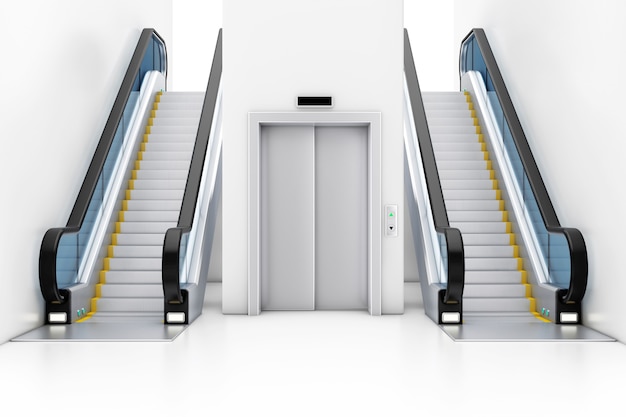Leading Lift Companies in London: Offering Quality Installations and Upkeep
Leading Lift Companies in London: Offering Quality Installations and Upkeep
Blog Article
Digging Into the Globe of Lifts: Typical Concerns Dealt With by Different Lift Systems
As we navigate via the vertical transport systems of contemporary buildings, lifts stand apart as a vital part of our every day lives. However, behind their seamless procedure exists a world of detailed mechanisms that can in some cases experience challenges. From hydraulic lifts to grip systems and machine-room-less designs, each lift type features its set of typical concerns. Understanding these difficulties is crucial for ensuring the smooth functioning of these essential systems. Let's check out the intricacies that underlie the operation of lifts and the possible problems that can develop, dropping light on the detailed web of lift mechanisms.
Hydraulic Lifts
Hydraulic elevators, frequently preferred for low-rise structures, use fluid pressure to manage the activity of the elevator cars and truck (lift repair companies). This system includes a hydraulic pump pushing oil into a cylinder, triggering the lift to move in the preferred direction. While hydraulic lifts are known for their silent and smooth procedure, they do include their own collection of common issues
One common issue with hydraulic elevators is oil leak. Additionally, issues with the control system, such as defective shutoffs or a malfunctioning pump, can cause interruptions in the lift's movement.
Routine maintenance and punctual repair work are necessary to make certain the smooth functioning of hydraulic lifts. By addressing these common problems proactively, building owners can minimize downtime and make certain the safety and security and efficiency of their vertical transport system.
Grip Elevators
When taking into consideration vertical transport systems in structures, one more common type apart from hydraulic lifts is the traction elevator. Grip lifts run utilizing a system of ropes and counterweights that relocate the elevator cars and truck by grasping onto the hoist ropes. This system permits smoother and much faster vertical transport contrasted to hydraulic systems.
Among the common concerns encountered by traction elevators is rope wear. The consistent movement of the ropes within the traction system can lead to damage in time, potentially creating the elevator to malfunction or come to be hazardous for usage. Regular inspections and upkeep of the ropes are important to ensure the lift's proper functioning and safety.
Another issue that traction elevators may come across is connected to the control system. Issues with the control system can bring about issues such as irregular activity, delays in response times, or even full shutdowns. Routine testing and upkeep of the control system are critical to prevent such issues and make certain the lift's reliability.
Machine-Room-Less (MRL) Lifts

Among the crucial parts of MRL elevators is the small gearless traction machine that is set next up within the hoistway. This maker efficiently drives the lift vehicle without the demand for cumbersome equipment found in conventional traction lifts. Furthermore, MRL elevators usually make use of a weight system to stabilize the car, further enhancing their energy effectiveness.
In spite of their benefits, MRL elevators may deal with difficulties associated with maintenance and repair work as a result of the restricted space for devices setup. Access for servicing elements within the shaft can be restricted, requiring specialized training for technicians. Correct upkeep routines and regular evaluations are vital to guarantee the continued smooth operation of MRL elevators.
Overloading and Weight Limitation Issues
Overwhelming and weight restriction problems are crucial problems in elevator procedures. Elevator producers layout lifts with particular weight capabilities to make sure guest security and tools long life.
When lifts are overwhelmed, it places too much strain on the electric motor, cable televisions, and other components, potentially creating breakdowns or break downs. Security mechanisms such as sensors and overload sensors are in area to avoid elevators from moving if they discover excess weight. In addition, exceeding weight limitations can bring about raised power intake and wear and tear on the lift system.
To alleviate straining concerns, developing supervisors should plainly present weight limits in elevators and educate passengers on the importance of adhering to these constraints - lift repair companies. Normal maintenance checks by certified technicians can additionally help make certain that lifts are running within safe weight criteria. By addressing overloading and weight limitation concerns proactively, building proprietors can boost elevator security and efficiency
Electric System Failings
Going beyond weight limitations in elevators can not only bring about mechanical issues but likewise potentially add to electric system failures within the lift framework. Electrical system failures are an important issue in lift procedure, as they can trigger unanticipated closures, breakdowns, or also security threats. One common electrical issue is the getting too hot of elements because of extreme current flow brought on by overwhelming the lift past its capability. This can result in harm to the circuitry, motor, or control systems, leading to expensive repair work my company and downtime.
Routine maintenance and check out this site examinations are vital to determine and resolve prospective electric problems without delay, making sure the reliable and risk-free procedure of elevator systems. By sticking to weight limits and carrying out routine electrical system checks, structure owners can alleviate the threat of electrical failures in lifts.
Conclusion

Hydraulic elevators, typically preferred for low-rise structures, utilize fluid pressure to control the movement of the elevator auto.When taking into consideration vertical transport systems in buildings, an additional common kind apart from hydraulic elevators is the grip elevator. Traction lifts operate utilizing a system of ropes and weights that move the lift vehicle by grasping onto the hoist ropes. Unlike traditional elevators that call for a separate machine room to house the devices, MRL elevators integrate many of the elements within the shaft, eliminating the requirement for a specialized device area.In final thought, elevators face common issues such as hydraulic malfunctions, traction system failures, and electric system issues.
Report this page